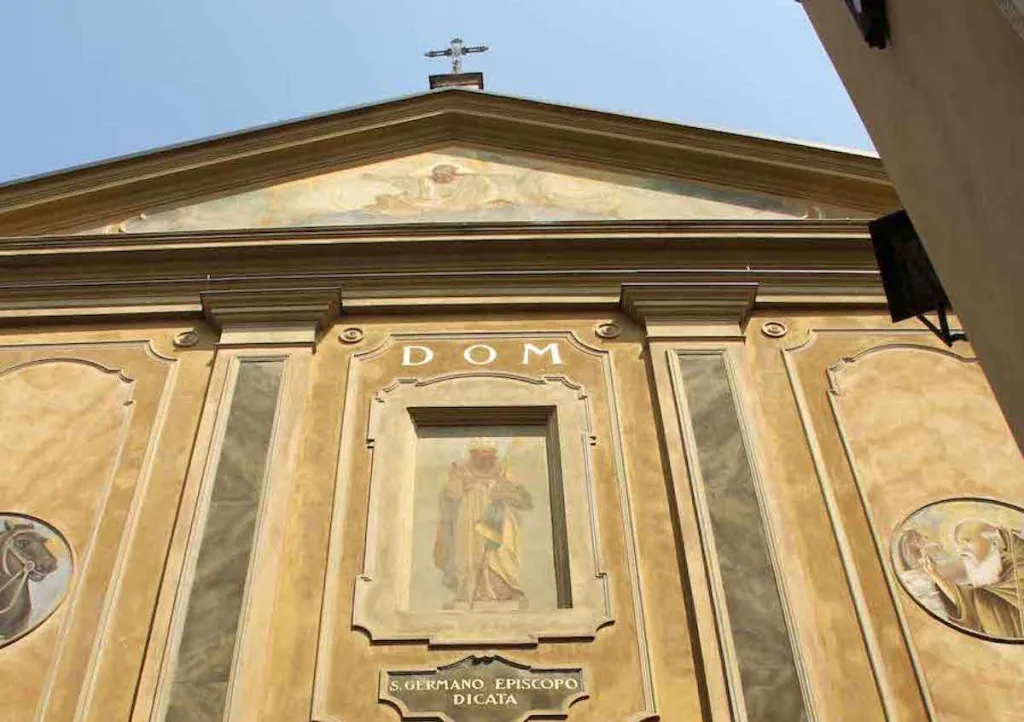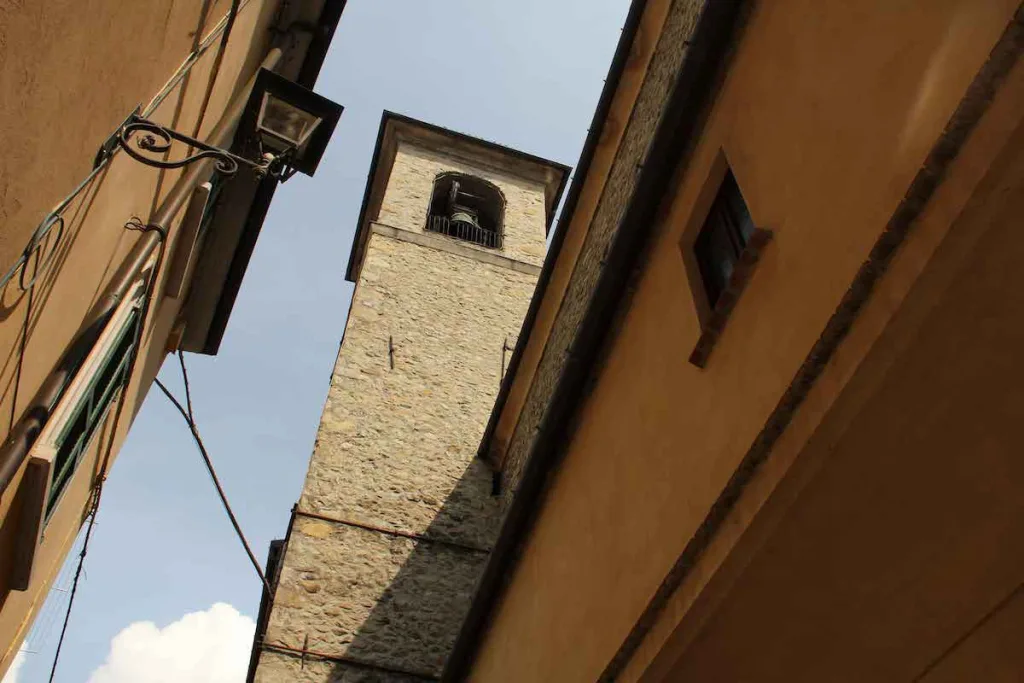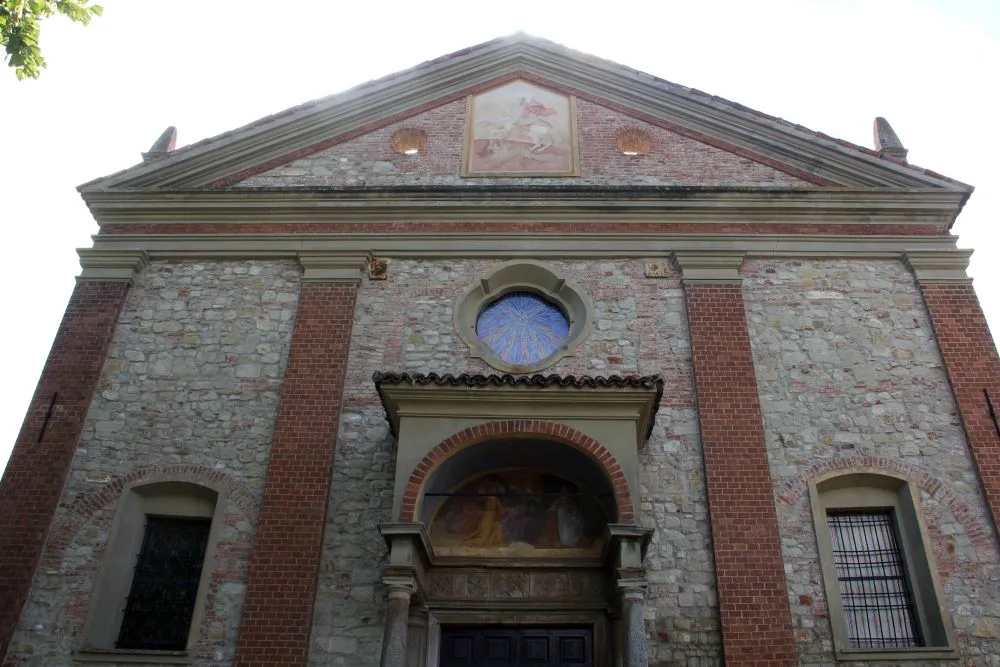The parish church of San Germano is one of Varzi's architectural jewels, dating back to the period between 1584 and 1620. The religious building was erected to replace an ancient 14th-century oratory dedicated to San Salvatore, which belonged to the Malaspina family.
The architecture and façade of the church
The church of San Germano presents an impressive and striking structure. Its architecture is characterised by a Latin cross plan, with a spacious single nave and three side chapels.
The façade, dating from the 19th century, is distinguished by its elegance and sobriety. Above the main portal is a 20th-century fresco by the painter Rodolfo Gambini, depicting St. Germanus, which adds an artistic touch to the façade.

Art treasures
Inside the church of San Germano are numerous artistic treasures that testify to the cultural richness of the area. One of the most important is
the chapel dedicated to Varzi's patron saint, St George. Here you can admire a valuable painting from 1860, depicting St George defeating the dragon, attributed to the painter Michele Cusa.
The chapel houses a precious relic of the arm of St. George, kept in a reliquary cast by the citizens of Varzi in 1946, at the end of the war, as a gesture of gratitude. The reliquary is carried in procession every year on the occasion of the patron saint's day on 23 April.
The church also houses other artistic masterpieces. The baptistery, made in white Carrara marble by Arturo Bardi in 1886, is an example of sculptural mastery.
The altar of St. Anthony Abbot and St. John the Evangelist, adorned with a prestigious altarpiece commissioned by Abbot Malaspina in 1846, is also striking for its beauty and iconographic richness. On the right, in the first chapel, there is a painting of the Madonna del Carmine from the end of the 16th century.

A place of faith and devotion
The church of San Germano is not only a treasure trove of art, but also a place of deep faith and devotion for the people of Varzi. Every year, the patron saint's day, dedicated to St. George, which is deeply felt in the village, brings the faithful together in an atmosphere of joy and spirituality. During the celebrations, the saint's relics are carried in procession through the streets of the town as a sign of the devotion and deep bond that unites the community with its religious history.

The life and cult of St George
St George, born in 280 AD in Cappadocia, was destined from birth to perform great deeds. Brought up in a religious environment by his parents Gerontius and Polychronia, he embraced the Christian faith and dedicated his life to good works and charity towards the poor. Despite being an officer in the militia of the Persian emperor Dacianus (or Diocletian, according to some sources), he refused to make sacrifices to the gods and was martyred and imprisoned.
Before being beheaded, St George promised protection to those who would honour his relics. He died in 303 A.D., aged only 23, and was buried in Palestine.
The legend of the maiden and the dragon
The legend of the liberation of a maiden by St George by defeating a dragon originated during the Crusader era following a misinterpretation of an image of the Emperor Constantine in Constantinople. The spread of this legend, probably influenced by a scene depicting the god Horus in a Roman uniform piercing a crocodile, contributed to the popular veneration of St. George. Numerous churches have been dedicated to his name throughout Europe, testifying to his great devotion.










